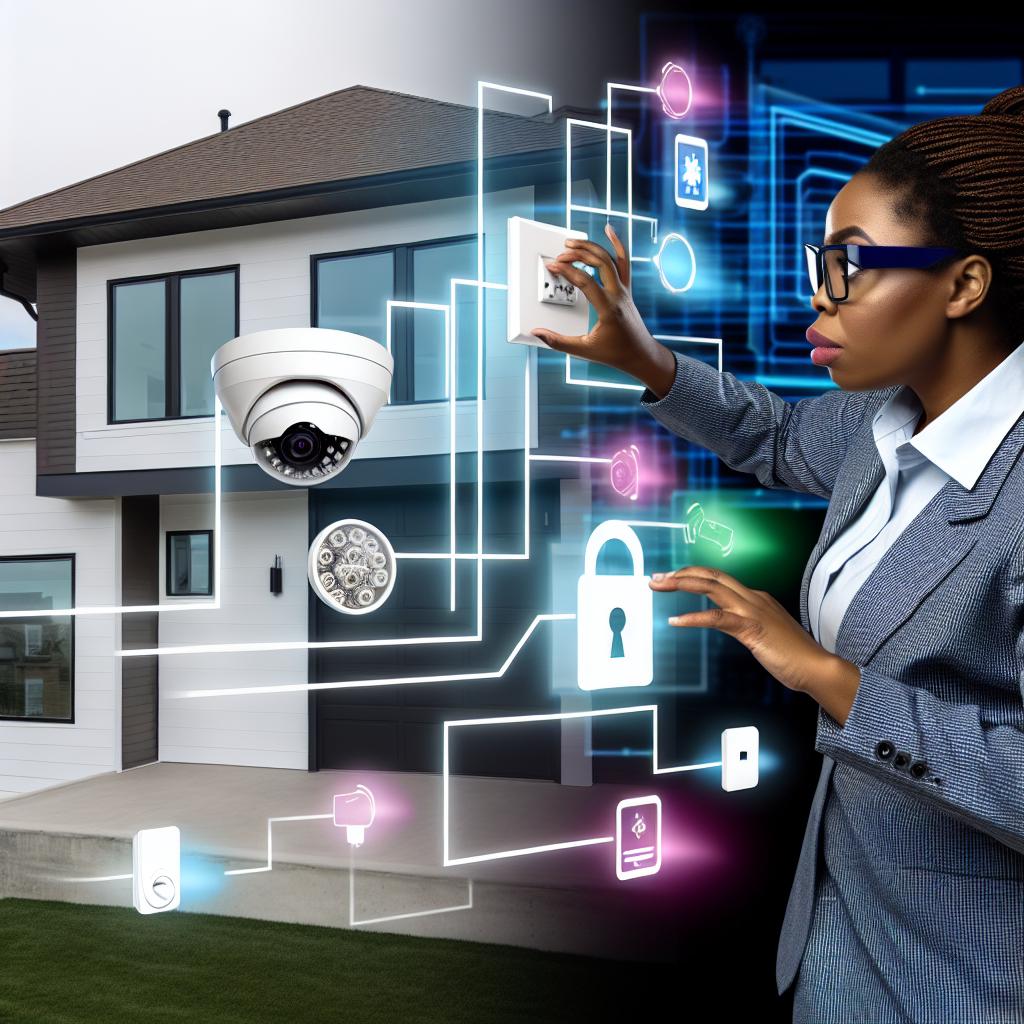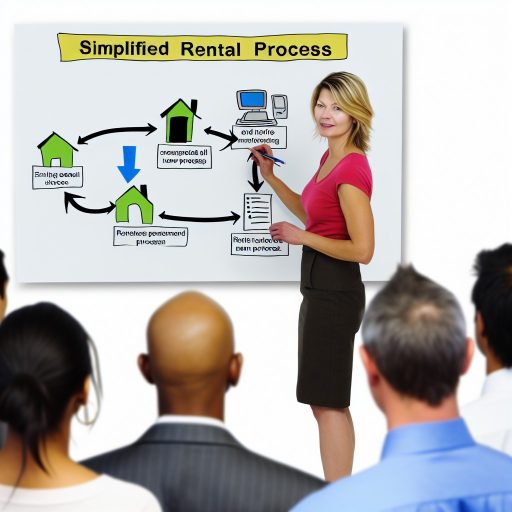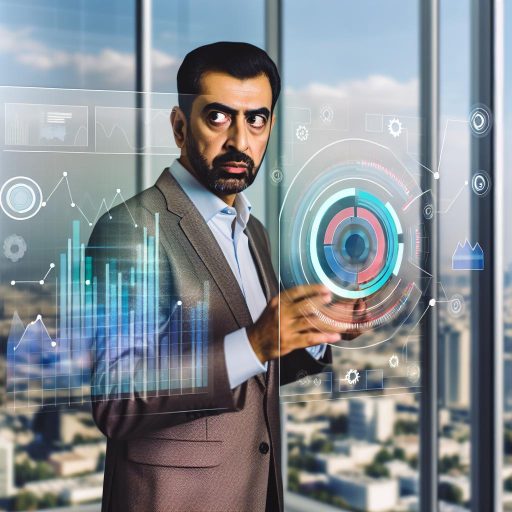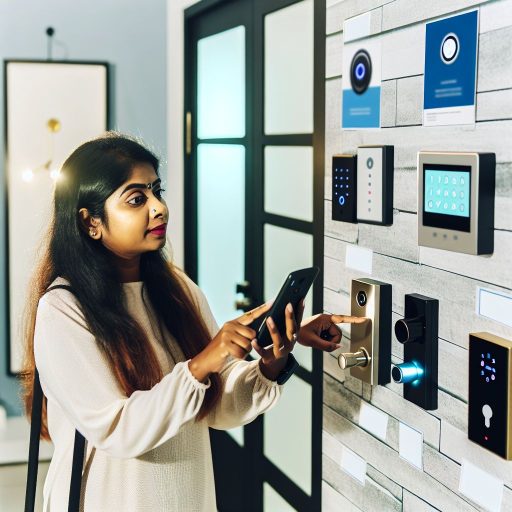Introduction to Smart Home Technology
Overview of Smart Home Technology
Smart home technology revolutionizes the way we interact with our living spaces.
It connects devices to the internet for seamless communication and control.
This technology encompasses various systems, including security, lighting, and climate control.
Additionally, it enhances convenience by automating everyday tasks.
Importance of Smart Home Technology
Smart home technology plays a crucial role in modern living.
It offers homeowners increased comfort and energy efficiency.
Moreover, it provides effective solutions for remote home monitoring.
Homeowners can easily keep track of their property, even when away.
This capability fosters peace of mind in our fast-paced lives.
Benefits of Remote Home Monitoring
Remote home monitoring enhances security by allowing real-time surveillance.
Homeowners receive immediate alerts in case of suspicious activities.
Furthermore, it helps monitor environmental conditions, such as temperature and humidity.
Smart sensors can notify homeowners of potential water leaks or fires.
Ultimately, this technology creates a safer and more comfortable living environment.
Future Trends in Smart Home Technology
The smart home technology landscape continually evolves with emerging trends.
Transform Your Real Estate Decisions
Unlock personalized real estate insights crafted just for you. Get actionable advice designed to amplify your success.
Get StartedIntegration with artificial intelligence enhances device responsiveness.
Voice-controlled systems are becoming increasingly popular among users.
Additionally, interoperability among different brands enhances user experience.
As technology advances, smart homes will become more accessible and affordable for all.
Types of Smart Home Technologies for Monitoring
Cameras
Cameras provide vital visibility for remote home monitoring solutions.
They allow homeowners to keep an eye on their property from anywhere.
Modern security cameras come with advanced features.
For instance, many include high-definition video and night vision capabilities.
Additionally, some models offer motion detection alerts.
These alerts notify homeowners of any unusual activity in real-time.
Moreover, cloud storage allows for easy access to recorded footage.
This ensures crucial evidence is always available when needed.
Sensors
Sensors play a critical role in home security systems.
They can detect various environmental changes.
Showcase Your Real Estate Business
Publish your company profile on our blog for just $200. Gain instant exposure and connect with a dedicated audience of real estate professionals and enthusiasts.
Publish Your ProfileCommon types include motion, door/window, and smoke detectors.
Motion sensors activate when they sense movement in designated areas.
This feature can significantly enhance security in vulnerable locations.
Door and window sensors alert homeowners when an entry point is opened.
Furthermore, smoke detectors offer essential fire safety monitoring.
They can send alerts directly to homeowners’ mobile devices.
Alarms
Alarms are essential components of smart home technology for security.
They sound alerts to notify homeowners of potential threats.
Additionally, these alarms can be programmed for various scenarios.
For example, a burglary alarm activates when sensors are triggered.
Emergency alarms can also include flood or carbon monoxide alerts.
Some systems integrate alarms with local emergency services.
This feature ensures rapid response during critical situations.
Alarms help create a comprehensive home security system.
Benefits of Remote Home Monitoring
Security
Remote home monitoring enhances security for homeowners.
It provides real-time alerts on unusual activities.
Surveillance cameras can monitor different areas of the home.
With smart locks, access can be controlled remotely.
Additionally, notifications can inform you of unwanted entries.
This technology can deter potential intruders effectively.
Convenience
Smart home technology offers unmatched convenience to users.
Homeowners can control lights and appliances from anywhere.
Remote access allows for monitoring pets and cleaning services.
Setting schedules can automate daily routines easily.
Voice commands simplify interaction with devices at home.
Moreover, mobile apps provide comprehensive oversight.
Energy Efficiency
Remote home monitoring contributes significantly to energy efficiency.
Smart thermostats can adjust temperatures automatically based on your presence.
This helps reduce energy consumption and lower bills.
Additionally, smart lighting can be programmed to turn off when not needed.
Showcase Your Real Estate Business
Publish your company profile on our blog for just $200. Gain instant exposure and connect with a dedicated audience of real estate professionals and enthusiasts.
Publish Your ProfileEnergy usage reports provide insight for better management.
Overall, this technology promotes eco-friendly practices at home.
See Related Content: How PropTech Supports Sustainable And Green Building Practices
Popular Smart Home Devices for Remote Monitoring
Overview of Smart Home Technology
Smart home technology integrates various devices for enhanced living.
These devices allow users to monitor and control their homes from afar.
Moreover, they contribute to increased security and energy efficiency.
Security Cameras
Security cameras are essential for remote home monitoring.
They provide real-time surveillance via mobile apps.
For example, Google Nest Cam offers high-definition video and two-way audio.
Additionally, Arlo Pro 4 includes features like color night vision.
- Google Nest Cam: High-definition video feed.
- Arlo Pro 4: Color night vision capabilities.
- Ring Spotlight Cam: Integrated spotlight and alarm.
Smart Doorbells
Smart doorbells enhance home security with advanced features.
They allow owners to see and communicate with visitors remotely.
The Ring Video Doorbell provides HD video and motion alerts.
Meanwhile, the Nest Hello supports facial recognition technology.
- Ring Video Doorbell: Motion alerts and HD video.
- Nest Hello: Facial recognition technology.
- Eufy Security: Local storage option for video footage.
Smart Sensors
Smart sensors monitor different aspects of home safety.
They detect water leaks, carbon monoxide, and intrusions.
Philips Hue motion sensors automatically trigger lights.
In addition, the Aqara Water Leak Sensor alerts users to water issues.
- Philips Hue: Motion sensors for lighting control.
- Aqara Water Leak Sensor: Alerts for leaks.
- SimpliSafe: Comprehensive security system with sensors.
Smart Thermostats
Smart thermostats optimize energy usage and comfort levels.
The Nest Learning Thermostat learns user behavior over time.
Ecobee SmartThermostat features built-in Alexa for voice control.
Both devices contribute to reduced energy bills.
- Nest Learning Thermostat: Learns user preferences.
- Ecobee SmartThermostat: Built-in Alexa functionality.
- Honeywell Home T9: Room sensors for temperature management.
Device Capabilities for Enhanced Control
Each of these smart home devices enhances remote monitoring capabilities.
They provide security, convenience, and energy efficiency.
As a result, homeowners gain peace of mind and control.
Learn More: Smart Home Technology For Increasing Home Security Systems
Integration of Smart Home Technology with Mobile Applications
Enhancing Home Security
Smart home technology offers enhanced security features.
Homeowners can monitor their properties remotely.
Mobile applications allow real-time alerts and notifications.
Users can access live camera feeds from their smartphones.
Showcase Your Real Estate Business
Publish your company profile on our blog for just $200. Gain instant exposure and connect with a dedicated audience of real estate professionals and enthusiasts.
Publish Your ProfileThis convenience increases peace of mind, especially when away.
Improving Energy Management
Smart home systems help track energy consumption.
Mobile applications provide insights into usage patterns.
Homeowners can adjust settings to maximize efficiency.
Devices like smart thermostats learn preferences over time.
Consequently, users enjoy reduced energy bills and less waste.
Remote Control of Appliances
Smart applications offer remote control capabilities for appliances.
Homeowners can turn devices on or off from anywhere.
This feature enhances convenience for busy individuals.
For instance, smart ovens can preheat before arriving home.
Additionally, devices can be scheduled to run at specific times.
Integration with Voice Assistants
Many smart home systems integrate seamlessly with voice assistants.
Users can control devices simply by speaking commands.
This hands-free approach adds a layer of convenience.
Voice commands work for tasks like adjusting temperature or lighting.
Moreover, this integration creates a more connected home experience.
Improving Accessibility
Smart home technology particularly benefits individuals with disabilities.
Mobile applications allow control of home environments easily.
This technology enhances independent living for many users.
Automated features can assist with daily tasks effectively.
Consequently, accessibility solutions improve quality of life.
Facilitating Home Maintenance
Smart home systems offer alerts for maintenance issues.
Homeowners receive notifications about necessary repairs.
For instance, a smart smoke detector communicates its status.
Users can also track appliance performance through mobile apps.
This proactive approach can prevent costly repairs in the future.
You Might Also Like: How Blockchain is Streamlining Real Estate Transactions

Challenges and Concerns
Privacy Issues
Smart home technology raises significant privacy concerns for users.
When devices continuously collect data, users may feel their personal space is invaded.
Data about daily routines can expose sensitive information to unauthorized access.
Showcase Your Real Estate Business
Publish your company profile on our blog for just $200. Gain instant exposure and connect with a dedicated audience of real estate professionals and enthusiasts.
Publish Your ProfileMoreover, hackers may exploit vulnerabilities in smart devices to gather personal information.
Security Risks
One of the main challenges is the inherent risk of cybersecurity threats.
Malicious actors may target poorly secured devices for unauthorized access.
As a result, homeowners face potential surveillance and theft.
Proper security protocols are essential to mitigate these threats.
Vulnerabilities in Devices
Many smart devices fail to receive regular software updates.
This leaves them susceptible to newly discovered vulnerabilities.
Consequently, users must ensure their devices are always up to date.
Network Security
Home networks can be a weak point in smart home systems.
An unsecured Wi-Fi network may allow hackers to infiltrate smart devices.
Using strong passwords and network encryption helps protect against such attacks.
Data Management
Data management is another crucial concern in remote home monitoring solutions.
Users must understand how their data is collected, stored, and shared.
Clear privacy policies are essential for building trust with consumers.
Furthermore, companies should allow users to control their data preferences.
Retention Policies
Many users are unaware of how long their data is retained.
Companies should implement clear data retention policies.
Users deserve to know when their data will be deleted or archived.
Third-Party Sharing
Another concern involves third-party sharing of data.
Users should be informed if their information is sold or shared with partners.
Transparency regarding data-sharing practices fosters user confidence in smart home technology.
Find Out More: Smart Home Technology For Managing Vacation Rental Properties
Future Trends in Smart Home Technology: AI, IoT, and Automation
Integration of Artificial Intelligence
Artificial intelligence revolutionizes how we interact with our homes.
It enables devices to learn from our habits and preferences.
Smart assistants, like Amazon Alexa, become more intuitive over time.
Furthermore, AI improves security systems by predicting potential threats.
These advancements lead to greater peace of mind for homeowners.
The Role of the Internet of Things
The Internet of Things connects various home devices seamlessly.
This connectivity allows for centralized control through smartphones or tablets.
Devices communicate with one another to optimize energy use.
Showcase Your Real Estate Business
Publish your company profile on our blog for just $200. Gain instant exposure and connect with a dedicated audience of real estate professionals and enthusiasts.
Publish Your ProfileFor example, smart thermostats adjust temperatures based on occupancy.
Consequently, homeowners can save on energy bills significantly.
Enhancements through Automation
Home automation takes convenience to the next level.
Automated lighting systems turn on and off according to schedules.
Smart locks provide keyless entry, enhancing security and accessibility.
Moreover, home appliances can be programmed for efficient operations.
As a result, daily tasks become more manageable and time-saving.
Emerging Technologies in Smart Homes
New technologies are constantly emerging in the smart home sector.
Innovative sensors monitor everything from air quality to water leaks.
These sensors send alerts to homeowners for immediate action.
Additionally, robots are becoming common for cleaning tasks.
These advancements aim to enhance comfort and functionality at home.
Future Implications for Homeowners
The future of smart home technology promises greater efficiency and usability.
As technology evolves, costs are expected to decrease for consumers.
This shift will make smart home solutions accessible to more homeowners.
Staying informed on trends is crucial for maximizing benefits.
Adopting these technologies early can greatly enhance home life.
Step-by-Step Guide to Setting Up a Smart Home Monitoring System
Understanding Your Needs
Begin by assessing your home security requirements.
Identify areas that need surveillance or monitoring.
Consider your budget for smart home technology.
Make a list of essential features you desire.
Choosing the Right Devices
Research available smart home devices on the market.
Look for user reviews and ratings on platforms like Amazon.
Select devices that suit your specific needs and preferences.
Some popular categories include security cameras, motion sensors, and smart locks.
Creating a Network
Ensure you have a strong Wi-Fi connection throughout your home.
Consider using a mesh Wi-Fi system for better coverage.
Connect your smart devices to this network for seamless operation.
Test the connectivity of your devices in different locations.
Installing Smart Devices
Follow the manufacturer’s instructions to install each device.
Showcase Your Real Estate Business
Publish your company profile on our blog for just $200. Gain instant exposure and connect with a dedicated audience of real estate professionals and enthusiasts.
Publish Your ProfileBegin with outdoor cameras or doorbell cameras for security.
Then, install indoor cameras in high-traffic areas.
Next, set up motion sensors near entry points to your home.
Configuring the System
Download the app associated with your smart home devices.
Create an account to manage your devices from a central hub.
Link your devices through the app and adjust settings accordingly.
Set notifications for alerts related to motion or security breaches.
Testing Your System
Conduct thorough tests to ensure everything functions properly.
Check camera angles and adjust as necessary for optimal views.
Simulate events to test motion sensors and alerts.
Regular Maintenance
Periodically check and update your device firmware.
Regularly review your system settings to ensure effectiveness.
Replace batteries in devices as needed to maintain functionality.
Consider expanding your system with additional devices over time.




